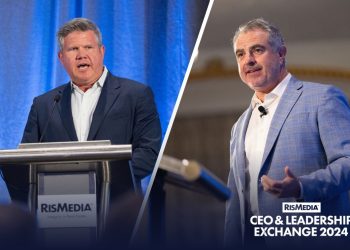
By Anne Houlihan
RISMEDIA, Feb. 4, 2008–For many years, those in the Baby Boomer generation have held the reins in most companies, leading the Generation X workers in the day-to-day activities. However, with the members of the Boomer generation ranging in age from forty-four to sixty-two now, in just three short years the oldest of the Boomers will start exiting the workforce. And as the years tick by, more and more Boomers will be retiring, leaving the leadership reigns in many companies up for grabs.
What does this mean for Gen-Xers? Namely that they’ll be moving into leadership positions rapidly. In doing so, though, they’ll not only be leading their fellow Gen-Xers and the younger Millennial workers, but they’ll also be leading Baby Boomers and possibly some older workers from the Veteran generation who are still in the workplace. It’s a leadership transition the likes corporate America has never seen before due to the stark differences in values between the two dominant generations.
In order for this to be a successful transition, you need to understand both how the younger people lead and how to harness their natural leadership style for the company’s best interests. After all, if these young leaders don’t have the right leadership skills in place, then the whole company is affected.
At the same time you need to remember that business and society in general are changing, so it’s only natural that the next generation’s leadership style will change as well. In other words, Gen-Xers are not going to lead the way the Boomers did. They’re working in a different economy and business model, and they have different values and experiences that they bring to the table. So you need to look at the future leadership of corporate America in a different light.
Whether you’re in the position of grooming Gen-Xers for future leadership roles within your organization or you’re suddenly being managed by a Gen-Xer, the following points will help you understand the younger leadership style, how to harness it, and how it impacts everyone in the company.
1. Mentoring matters.
Gen-Xers are going to require mentoring before they even step into a leadership role. Aside from knowledge of how the company runs, they also need to understand what makes the people in the different generations tick and what is going to be most effective in terms of leading the various generations. Since many older workers mistakenly believe that Gen-Xers are lazy and don’t know what they’re doing, you need to help the new young leaders learn to come from a place of commonality so they can bring everyone together. Therefore, in your mentoring process, be sure to go over people skills, not just business processes. Help the new leaders understand what environment the Boomers and Veterans grew up in and what values shape their world. This is important, because as the old saying goes, “You can’t always teach an old dog new tricks.” Gen-X leaders need to keep that in mind in their leadership approach. Truly great leaders know how to balance people and processes for the company’s overall good.
2. Open dialog is key.
Gen-Xers want to get fast results. They’re focused on getting the job done, and to do that they rely heavily on technology and multi-tasking. They’re self-starters who prefer a collaborative environment. Boomers, on the other hand, are used to the leader giving a directive and then focusing on that one task until it’s done. Many still do tasks manually, or if they use technology, they don’t use it very effectively. However, if a Gen-Xer were to start telling their older staff what to do, it probably wouldn’t go over too well. The young leader would get a lot of resistance. Instead, Gen-Xers need to work on building trust. They need to come from a place of empowering the older worker by complimenting them on their knowledge and their past experience. Therefore, a good approach is to ask the older workers, “How do we want to handle this?” The new Gen-X leaders need to come from a place of “we” rather than “I.” When young leaders are open and ask the older workers their opinions rather than be assertive and tell them what to do, Gen-Xers are seeking to understand rather than to be understood. With open communication, people can overcome most resistance.
3. Value their values.
Gen-Xers are family oriented and place a high value on life balance. As such, they tend to get the job done and leave at five o’clock. Older workers, on the other hand, believe in working late. In their view, the more hours you put in, the more loyal and productive you are. The moral here is to not be surprised when the new Gen-X leader refuses to put in fifteen-hour days on a regular basis. And even though Gen-Xers tend to work only eight- or nine-hour days, they still get the job done because they value results rather than hours. Additionally, they grew up with technology and are comfortable using it. As such, they are always looking for the quickest way to do something. So rather than view Gen-Xers negatively for going home at five o’clock, see if you or the older workers on staff can learn a faster way to do something from the new Gen-X leader. Look at the measurable results Gen-Xers produce and understand the processes they use to achieve them. You might just learn a faster way to do something, which would enable everyone to go home at five o’clock for once.
4. Focus on retention.
In terms of retention, companies face two main challenges: 1) Older workers will leave, believing that the “young kids” have no idea how to lead, and 2) Gen-Xers will leave, feeling that no one at the company is taking them or their new leadership position seriously. Therefore, as the leadership transition emerges, companies need a retention program in place for both younger and older generations so they can keep the expertise in house and have future leaders. Remember that Boomers and Veterans have the knowledge and wisdom. They went through a lot of trial and error. Gen-Xers need these people as mentors. If turnover gets too high from either segment, you’ll lose a lot of knowledge and many future leaders, and the company will suffer. That’s why current leadership needs to understand what will keep people on board. For example, older workers tend to like monetary incentives, while younger workers tend to prefer time off. The more perks you can give people to stay with you, the stronger the company will be in the future.
The Next Generation…and Beyond
Regardless of what happens, you and everyone on staff always need to come from a place of understanding and humor. Remember that you can’t change people. Rather, you need to focus on what you can do to bring understanding to the workplace. When you concentrate on harnessing the strengths of everyone-especially the new Gen-X leaders-you are helping the company successfully navigate the upcoming leadership transition. And as one generation passes the reigns to the next, everyone in your organization will realize that we can all learn something from one another, regardless of age.
About the Author
Anne Houlihan is President of Satori Seal, where she tripled revenues in one year and increased profits 140 percent with innovative budgeting and leadership. She is also founder of Golden Key Leadership, where she combines more than 25 years of corporate experience and coaching to assist companies of all sizes. She helps improve management techniques, empower employees to be decision-makers, bridge the generational gap and overcome adversity. For information on her speaking and consulting, visit www.GoldenKeyLeadership.com or call 951-235-5405.










